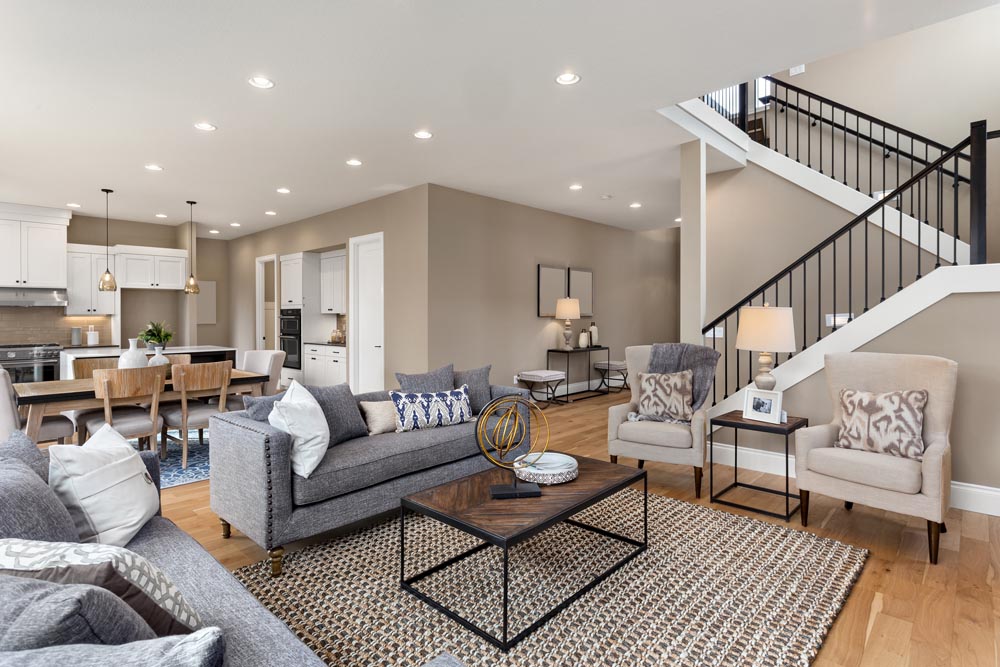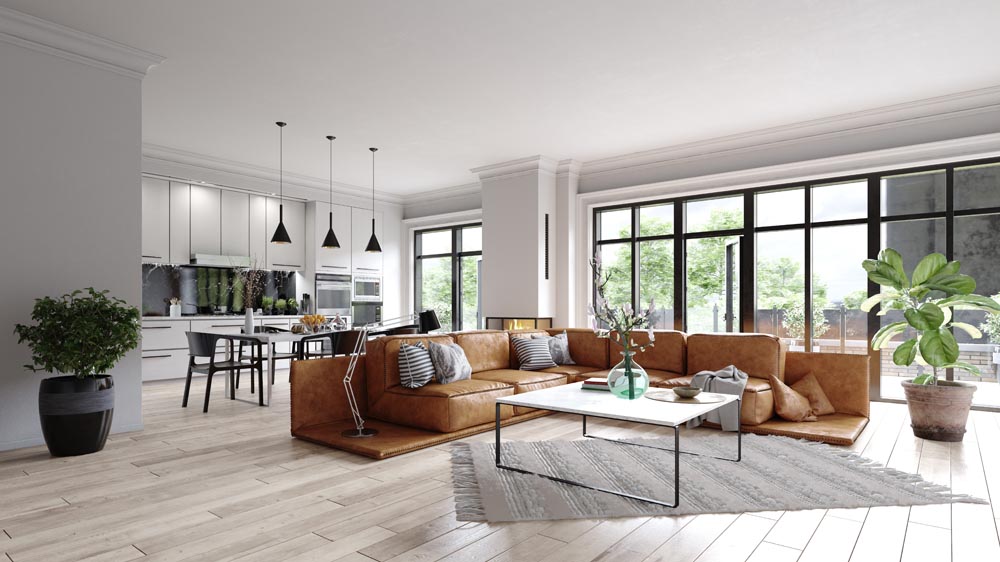
Your furniture and flooring — two hardworking aspects of your interior. Not only do these aspects perform a practical purpose, but they also need to look great, providing the aesthetic flourishes you need to feel right at home. But how do you make sure that both are pulling in the right direction? How do you make sure your flooring and your furniture complement one another?
Easing the Transition
If there is a clash between your flooring and your furniture, this might not be too much of a problem. You may be able to reduce this clash without taking drastic measures, such as buying new furniture or installing a new floor. How? With the addition of a simple rug to ease the transition.
For example, perhaps you have a coffee table in your living room. This coffee table serves as a centrepiece, drawing the eye and balancing the room, but it doesn’t look quite right when placed next to your flooring. No problem. Simply choose a rug that pairs well with the colour and texture of both flooring and furniture, softening the transition between the two. This rug can easily be switched or moved around with minimal disruption if you want to create a new aesthetic within your interior.
Protecting and Maintaining Your Floor
Placing your furniture on a rug like the one mentioned above also helps furniture and flooring complement one another in a practical sense. Furniture has a habit of marking and scraping wooden floors and other forms of hard flooring. Heavier furniture items can also leave marks and tracks on carpeting, particularly luxury plush carpets.
A rug serves as an additional layer of defence between the furniture and your floor. You can also enhance this defence further by placing protectors under chair and table legs and other points of contact.

Exploring Styles with a Mood Board
Before you make any major decisions regarding your furniture or flooring, it’s helpful to explore the different stylistic options available to you using a mood board. This is a planning tool used by many creatives, from interior and fashion designers through to artists, and it is very useful for giving you an idea of which styles will complement one another best.
For example, perhaps you have a Scandinavian style palette in mind. This might involve the soft hues of pinewood or the textures of wool and linen. Collect different aspects together and draw inspiration from them. Mix and match different types of flooring, along with different design concepts, to better understand how your flooring and furniture can complement one another.
Don’t Become Preoccupied with a Perfect Match
You may want to try pairing different styles together. Let’s say you are interested in the Scandinavian style listed above, as well as an earthier, more industrial aesthetic. Who’s to say that these two options can’t work well together? Consider pairing pinewood colouring alongside the more robust tones of bronze and burnished chrome within your mood board and see what works
Remember, this mood board is your opportunity to really go wild and experiment without having to commit to a particular style.

Consider Practical Needs
Your furniture serves a practical purpose too. In a TV, games, or home theatre room, your sofa is designed to support you while you enjoy great entertainment. In your dining area, on other hand, your table and chairs are there to give you an ideal place to enjoy great food with friends and family.
Think about how your flooring can work towards these practical aims. Wooden or laminate flooring in your dining space might be easier to clean, for example, providing additional peace of mind at meal times. In the TV room, you will probably want to avoid hard flooring surfaces that may create echoes or distortions, so a carpeted floor is likely to be the better option.
Find the Right Carpet for You at Jagers
At Jagers Carpets, we provide our customers with the flooring options they need to get the best from their space. Reach out to our team to learn more, or select the flooring type you want and get a carpet quote delivered to you online.
